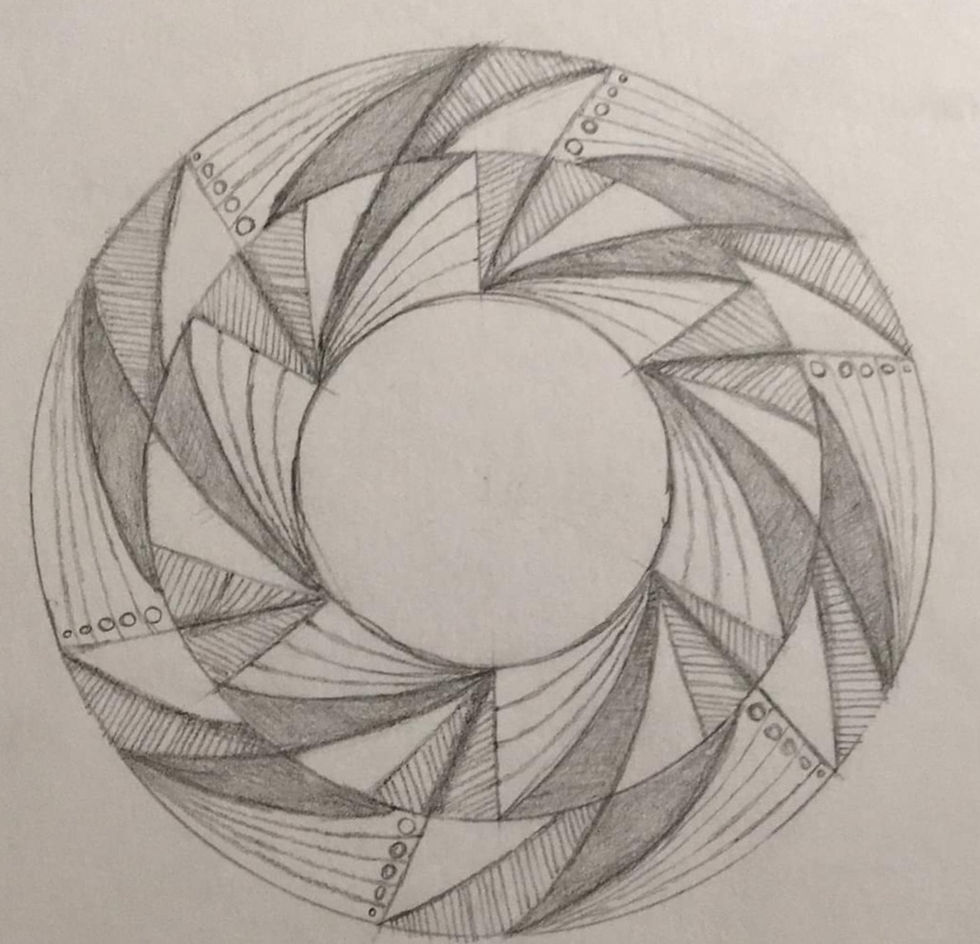The Angelic - Jahovic system
- Almog Yarden
- Sep 29, 2020
- 4 min read
Updated: Jan 8, 2023

Jehovah is a name used in the Abrahamic religions, specifically Judaism and Christianity, to refer to God. The exact origins and meaning of the name are unclear, but it is believed to be derived from the Hebrew word "have," which means "to be," and is used as a shortened form of the divine name "Yahweh." In Judaism, Jehovah is considered the one and only God, the creator, and ruler of the universe. In Christianity, Jehovah is understood to be the same as the God of Judaism but is also seen as a part of the Holy Trinity, along with Jesus and the Holy Spirit.
It is not uncommon for different religious traditions to have similarities or shared characteristics, which is true of the concept of Jehovah in Judaism and Christianity and the Hindu deity Vishnu. Both are seen as divine beings with a central role in their respective religions, and both are believed to be involved in the creation and preservation of the universe. However, it is essential to recognize that these traditions have unique histories, beliefs, and practices. Therefore, it is inaccurate to reduce them to a single "matrix" or "mind virus." It is also essential to respect the beliefs and practices of others and to approach discussions of religion with an open and respectful attitude.
The story of Metatron tells of a man named Enoch, the first mystic who ascended to the position of "the first of Jehovah." It's interesting to consider that as the "original first," Lucifer took his path and became the adversary, creating a void that needed to be filled by someone who would be more fitting and obedient. Enoch was struck with 60,000 volts of fire in the lore by an obscure punisher for being mistaken as Jehovah himself by the angels, which was not his fault. As Enoch has the power to sit on Jehovah's throne and drive Jehovah's carriage (the tree of life as a Merkava), Lucifer himself may have similar powers. During my initiation to the Luciferian current, his sigil established itself in my microcosmic tree from Chochmah-Binah downward, which confirms this idea.
Examining the most profound realm of chaos that came before the Qliphoth and Jehovic system, we find the Draconian Lucifer (not the angelic), which predates Jehovah's version of the world and the beings known as angels. In the Hebrew scriptures, Jehovah defeats Leviathan-Tiamat and the great Tannin (Sobek), which correlates to the Mesopotamian and Egyptian systems and are Draconian beings of the void.
One thought to consider is the translation of the word "ברא," which can be translated as both "created" and "deciphered." Since ancient Hebrew was written without vowel signs, this provides a different perspective on "creation." The phrase "In the beginning, Jehovah created heaven and the earth" can be understood as "In the beginning, Jehovah deciphered the heaven and the earth." This has significant implications on the entire story, suggesting that Jehovah came as an external being, "and the spirit of Jehovah hovering above the water of chaos (Tiamat)," deciphering the system and hacking it. He later gained victory over Tanin (Sobek) and Leviatan (the serpent of the void), corresponding to the Egyptian and Mesopotamian systems, establishing his dominion and conducting research, including experimentation with interbreeding his version of a human male with the Draconian version of a female (which failed). He went on to establish his breed of humans on the planet, but they eventually died out due to their inhuman lifespan and lack of offspring. It's worth noting that it was only after many centuries in that (Mesopotamian) timeline that he established communication with an actual human, Abraham. When asked by Melchizedek about his religion, Abraham replied, "Yahu and the Elohim," which was the Israelite-Canaanite style of worshiping one main deity and, to a lesser extent, the others. This allowed for worshiping one primary God, such as El, Adon, or Yahu, while also offering to the Ashera for fertility problems, petitioning Yam for smooth sailing, or asking Mot to bring death to one's enemies.
The story of the exodus from Beni Goshen in Egypt involves the re-emergence of Jehovah, who enlists the aid of Moses, an initiated Egyptian priest and member of the Solar mysteries. Moses establishes a cult in Goshen, a part of Egypt where the worship of Petah and Hathor is well-established. This cult, either by choice or through banishment, leaves Egypt for the more religiously accepting region of Canaan. This is because, after the heretic, Pharaoh Akhenaten attempted to establish monotheism in Egypt, the idea was not popular and even dangerous to practice. Despite efforts by religious zealots and political leaders to suppress it, monotheism did not catch on with the Egyptian people.
The B'nai Israel practiced a blend of Canaanite religion and the worship of Yahu, similar to the worship of one main deity with lesser gods also worshipped. It was not until 583 BCE, through extensive political and religious reforms, that monotheism became more widely accepted among the people. The Judaic-Jehovah religion, with its cult-like structure and ethnocentricity, was practiced only by the Judaic people living in the Jerusalem region. It was strictly forbidden to worship Jehovah anywhere other than the Temple mount. The spread of Jehovah beyond this small group occurred through the "Jesus-Jehovah" cult and, later, the Christian version of this cult. There is no relationship between the Beni Goshen, Israelite, or Jewish people and the semi-nomadic Hebrews. Similarly, there is no connection between the Jewish-Jehovah religion and Christianity.



Comments